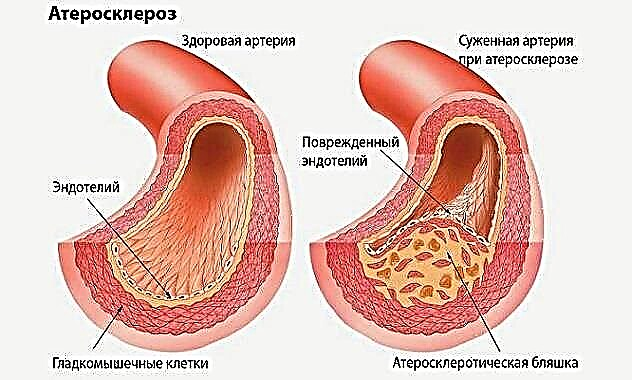No matter how harmless a runny nose may seem, it can cause a lot of inconvenience and be accompanied by severe complications. Improper treatment of rhinitis can lead to chronic sinusitis, tonsillitis and other undesirable consequences associated with the spread of infection and inflammation to the surrounding healthy tissue. Complex nasal drops can relieve symptoms of the disease.
 Thanks to the combined composition, it is possible to obtain a double, sometimes even triple effect, when using one drug. Medical experience shows the high effectiveness of such drugs, therefore they are often prescribed in otolaryngology.
Thanks to the combined composition, it is possible to obtain a double, sometimes even triple effect, when using one drug. Medical experience shows the high effectiveness of such drugs, therefore they are often prescribed in otolaryngology.
Combined solutions for nasal use have several components, the mechanism of action of which is aimed at eliminating symptoms, the cause of the disease, and also preventing complications.
You can prepare a medicine at home using a folk recipe. Alternatively, the drug can be purchased over the counter, which is a more affordable option. The fact is that self-made remedies may have an inaccurate composition or inaccuracies in preparation. This can lead to overdose and serious adverse reactions. On the other hand, the drug may be ineffective due to an insufficient dose of each of the components.
Compound drops for a child are recommended to be purchased at pharmacies in order to avoid deterioration of the condition.
Combination drugs are usually used when monocomponent drugs are ineffective.
Features of complex drops
 The composition of complex nasal drops can include the following "ingredients":
The composition of complex nasal drops can include the following "ingredients":
- antihistamines. They reduce tissue swelling, rhinorrhea, block histamine receptors that stimulate the development of allergies;
- vasoconstrictor - reduce the diameter of blood vessels at the injection site. Clinically, this is manifested by a decrease in mucosal edema, the volume of mucous secretions. With a decrease in nasal congestion, nasal breathing is restored;
- antimicrobial. Antibacterial, antiviral substances inhibit the vital activity of microbes and cleanse the pathological focus of infection;
- hormonal - have a powerful anti-inflammatory, decongestant, antihistamine effect;
- immunocorrecting. Depending on the purpose of therapy, immunostimulating or immunosuppressive components are prescribed;
- homeopathic, herbal remedies. They have a mild therapeutic effect, have a minimum number of side effects.
The use of combined drugs without an accurate diagnosis is prohibited. For example, with a viral infection, drugs with antibacterial activity should not be used. In atrophic form of rhinitis, the use of vasoconstrictor drugs is contraindicated.
Components of drugs
Most complex medicines are based on saline or antiseptics such as Dioxidin, Protargol, or Furacilin.
The antimicrobial ingredients that are included in the prescription are essential for the treatment of infectious sinusitis or rhinitis. In childhood, such medications are prescribed for adenoiditis.
Among antihistamines, Diphenhydramine or Suprastin is used. They are part of medicines used for allergic rhinitis. Their effect is clinically manifested by a decrease in itching sensations, perspiration in the nasopharynx, as well as restoration of nasal breathing.
Of the components with vasoconstrictor activity, Naphthyzine, Phenylephrine are used. They are especially dangerous with prolonged use at high doses. A common complication of this therapy is rhinitis medication and drying out of the nasal mucosa.
Antibacterial components can be represented by Gentamicin, Amikacin, Ceftriaxone. Their appointment is justified in case of bacterial inflammation of primary or secondary genesis.
Representatives of the hormonal group are Hydrocortisone and Dexamethasone. They quickly reduce the severity of edema and inflammation, however, the full therapeutic effect can be expected only three days after the start of therapy.
As for vitamins A, E, essential oils, plant extracts, they can be the main or additional components. One of the common side effects of natural treatments is allergies.
Application
To obtain the maximum therapeutic effect, complex nasal drops must be instilled after preliminary cleansing of the nasal mucosa.
For this, Aqua Maris, Marimer, Morenazal are recommended. Blow your nose well after rinsing with saline.
When using a solution to moisturize the mucous membrane, you can re-drip two drops after cleansing the nose. The number of procedures can be up to four per day.
Effective recipes
To choose the most effective recipe, you need to know the cause of the disease and the effect of the drug components.
Recipe number 1
With adenoiditis, severe rhinorrhea and microbial rhinitis, drugs based on a vasoconstrictor and antiseptic component can be used.
For preparation, you need 0.05% Naphthyzin in a volume of 1 ml and Dioxidin (1 ml). After thorough mixing, you can drip two drops three times a day.
Recipe number 2
 More complex medicine includes:
More complex medicine includes:
- vasoconstrictor component (Mezaton 1%, 1 ml volume);
- hormonal (Hydrocortisone 2.5%, 2 ml volume);
- antibacterial, such as Lincomycin 2 ml;
- antiseptic - Dioxidin 0.05% - 5 ml.
Given the presence of a vasoconstrictor, it is allowed to bury the nose no more than three times per day. The drugs are used for infectious sinusitis, as well as other bacterial diseases of the ENT organs.
Recipe number 3
In case of allergic rhinitis, the following complex medicine can be used. It includes:
- vasoconstrictor "ingredient" - Naphthyzin in the volume of half a bottle;
- antiseptic - Dioxidin - half an ampoule;
- hormonal (Dexamethasone - 1 ml);
- antihistamine (Diphenhydramine - 1 ml).
The last two drugs are needed to block histamine receptors. This is necessary to stop the allergic reaction and alleviate the general condition.
It is not recommended to independently invent recipes for nasal drops, since this requires deep knowledge in pharmacology and practical experience in using this medicine.
There are many combination drugs available over the counter.
Polydexa
The composition of the drug includes two antibacterial (neomycin, polymyxin B), hormonal (dexamethasone), vasoconstrictor component. The medicine is available in the form of a solution for nasal administration.
The therapeutic effect is expressed by the powerful anti-inflammatory, anti-edematous and antimicrobial properties of the drug. In treatment, it should be remembered that Polydexa will not be able to help in the presence of coccal flora, anaerobes and bacilli in the inflammatory focus.
Polydex is prescribed for infectious rhinitis to reduce inflammation, nasal congestion.
Contraindications, adverse reactions
Contraindications include:
- individual intolerance to the components;
- active viral infection.
Note that the drug can test positive for doping in athletes. The therapeutic effect should be assessed after 4 days from the start of therapy. Typically, a therapeutic course is 7 days.If you adhere to the recommended doses, systemic reactions are not observed.
During the lactation period, during pregnancy, the independent use of Polydexa is prohibited.
In most cases, the drug is well tolerated. If the doses are exceeded, the following symptoms may appear:
- irritation of the mucous membrane;
- an allergic reaction;
- sneezing;
- itchy sensations in the nasal cavities.
Long-term antibiotic therapy is accompanied by the activation of a fungal infection, which is quite difficult to fight.
Doses
The medicine is applied topically by instilling three drops in the nasal passages twice a day. If the treatment is carried out in a child, the dose should not be exceeded - 1 drop twice.
Vibrocil
Combined drugs include Vibrocil. Its composition is represented by an antihistamine, vasoconstrictor component. The clinical effect of the drug is presented:
- decrease in itching, soreness in the nasal passages;
- reducing tissue swelling;
- elimination of nasal congestion;
- a decrease in the volume of mucous secretions.
Vibrocil does not violate the physiological functions of the mucous membrane, which ensures its high resistance to irritating environmental factors, including allergens.
The drug is prescribed for seasonal or year-round rhinitis of allergic origin. It can be used in the treatment of otitis media to provide ventilation to the auditory cavity, as well as to reduce swelling of the mucous membrane of the Eustachian tube.
Vibrocil is used before diagnostic procedures or in the postoperative period to prevent complications.
Contraindications, adverse reactions
Before starting therapy, you should read the instructions. Particular attention should be paid to the section on contraindications. They include:
- hypersensitivity;
- glaucoma;
- a course of taking antidepressants;
- atrophic type of rhinitis;
- severe hypertension;
- violation of the cardiac rhythm.
Caution in treatment should be observed in people with insomnia, tremors, overactive thyroid gland, diabetes mellitus, prostate hypertrophy and epilepsy.
The maximum treatment course is 5 days, otherwise the risk of developing tachyphylaxis (addiction) increases.
Prolonged artificially created vasospasm in the nasopharynx is accompanied by a violation of the sensitivity of blood vessels to vasoconstrictor substances. As a result, to eliminate rhinorrhea, instillation of large doses of the drug is required, which worsens the course of the disease.
In most cases, a systemic effect is not observed, however, in children and in old age, if the recommended doses are exceeded, side effects may appear.
Given the risk of systemic reactions, you should not use Vibrocil on your own during pregnancy, in the lactation period.
 In case of an overdose, it is possible that:
In case of an overdose, it is possible that:
- heart palpitations;
- pain in the occipital zone;
- tremor;
- arterial hypertension;
- numbness of the limbs;
- insomnia;
- seizures;
- hallucinations;
- excitement;
- dizziness:
- nausea.
Among the local side symptoms, we single out discomfort, itching sensations in the nasal passages, nasal bleeding and dryness of the mucous membrane.
Dosage
For therapeutic purposes, two drops are prescribed three times a day. Instillation of the drug should be carried out on the cleaned mucous membrane of the nasal passages. To do this, you can use Dolphin, Aqualor or Salin. Children from the age of two should drip one drop 2-3 times.
Ginkomycin Teva
The composition of complex nasal drops is represented by a hormonal (hydrocortisone) and antimicrobial (neomycin) agent. This provides a pronounced anti-inflammatory, antibacterial, antihistamine and anti-edema effect.
The drug is prescribed for inflammatory, allergic diseases of the nasal passages. It is also effective for sinusitis, vasomotor rhinitis caused by an allergic reaction.
Ginkomycin-teva is applied in two drops every 2-4 hours. After the end of the acute period, the dosage can be reduced to one drop three times a day.
Among the contraindications, it is worth highlighting:
- individual intolerance to the constituents of the drug;
- acute fungal, viral process;
- lactation period;
- pregnancy.
Care should be taken when concurrently using nasal drops with antibacterial agents in tablet or injectable form.
Failure to comply with the recommended doses may cause itching, burning, pain and hyperemia of the nasal mucosa.
Combined drugs are much more powerful than monocomponent drugs, however, there are also much more contraindications and adverse reactions. In some cases, complex medicines are unreasonably used, which is accompanied by the development of resistance of infectious pathogens to antimicrobial agents, as well as a decrease in the therapeutic effect.



